Avoid 7 CRE Investing Mistakes That Limit Portfolio Growth
September 08, 2025

Commercial real estate (CRE) has long been one of the most effective strategies for building durable wealth, but it isn’t as simple as buying a property and waiting for returns. The difference between investors who thrive and those who struggle often comes down to discipline, knowing which outdated practices to leave behind and which strategies align with today’s realities.
Rising interest rates, tighter lending standards and shifting tenant demands are reshaping what constitutes successful CRE investing. Among the most critical CRE investing mistakes today are relying solely on cap rates, overlooking key operating expenses, and underestimating the importance of asset management. These missteps, once overlooked, now put entire portfolios at risk.
Experienced investors have adapted by employing more in-depth financial analysis, stress-testing commercial real estate exit strategies and treating property oversight as a key driver of performance.
These shifts underscore a crucial truth every serious investor must acknowledge: Avoiding common CRE mistakes is as important as identifying opportunities. Recognizing what no longer works allows you to protect capital, strengthen underwriting and position your portfolio for growth that can withstand multiple market cycles.
1. The Limitations of Cap Rate in CRE Valuation
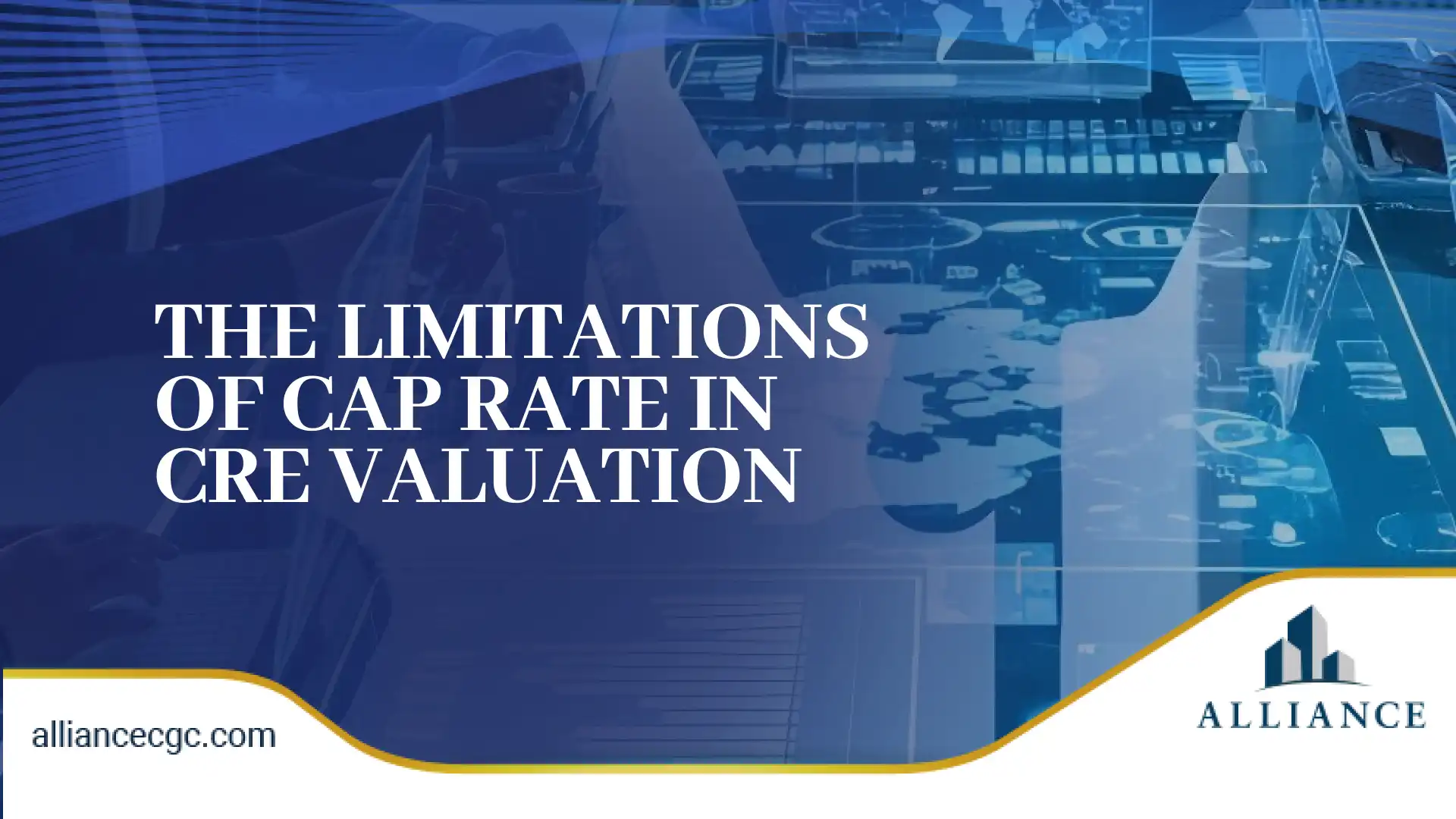
Cap rate is one of the most referenced metrics in commercial real estate investing, but relying on it alone is one of the most common mistakes investors make. While the cap rate offers a quick snapshot of income relative to price, it overlooks critical factors such as tenant quality, debt service coverage ratio (DSCR), capital expenditures and the long-term strength of the market.
A property that looks attractive on a cap rate basis can still underperform if operating expenses climb, net operating income (NOI) in CRE is inflated or local demand drivers weaken. That’s why experienced investors weigh cap rate alongside internal rate of return (IRR), cash-on-cash returns and market fundamentals, taking a more disciplined, multimetric approach to valuation.
Industry leaders often emphasize that CRE analysis extends far beyond a single formula, highlighting insights into commercial real estate investment strategies that examine advanced underwriting methods and market dynamics in greater depth.
2. Overlooking Market and Demographic Shifts

Commercial real estate values rise and fall with the strength of underlying market dynamics. Ignoring these shifts often leads to:
- Declining absorption and weaker leasing velocity
- Stagnant or negative rent growth
- Rising vacancy risk in previously “safe” markets
A clear example is the contrast between:
- Urban office towers → once considered bulletproof, now facing prolonged vacancies
- Sunbelt metros and secondary markets → benefiting from population inflows, diversified job creation and stronger tenant demand
To stay competitive, experienced investors build market and demographic analysis into every underwriting model. Key factors they monitor include:
- Migration flows – Where are people and businesses relocating?
- Employment growth – Which sectors are driving sustainable demand?
- Industry hubs – What regions are attracting new capital and talent?
By tracking these fundamentals, investors can reduce exposure to underperforming assets and position portfolios in markets with long-term value creation potential.
3. Outgrowing the Mistake of Underestimating CRE Operating Expenses
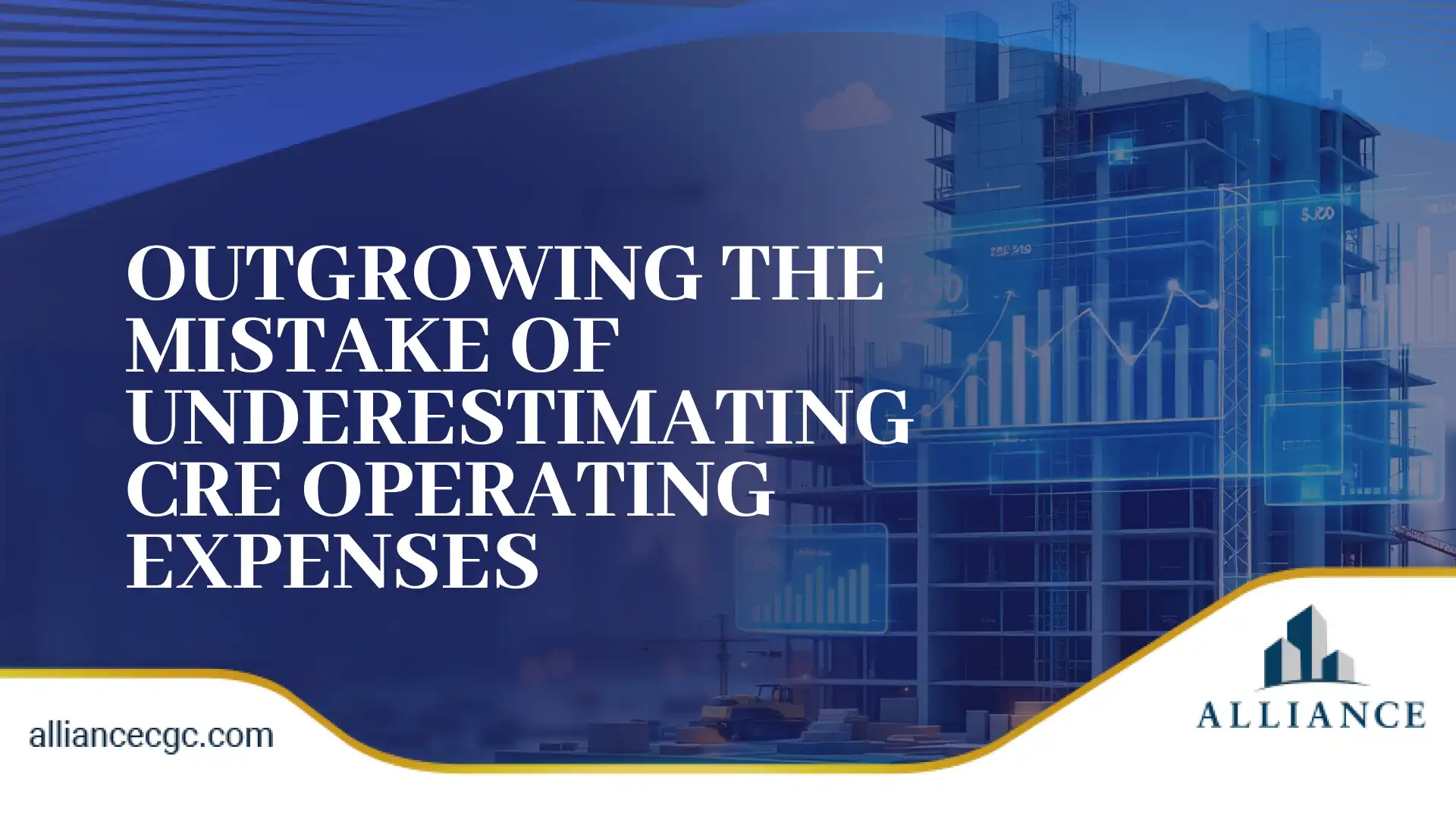
In commercial real estate, net operating income (NOI) drives value, and its accuracy depends heavily on the precision of expense modeling. Investors who once treated operating costs as secondary learned that thin assumptions can weaken performance.
These operating expenses in CRE are often underestimated, including property tax reassessments, insurance premiums that rise in risk-prone markets, utility volatility, and inevitable capital expenditures, such as heating, ventilation, and air conditioning (HVAC) systems, roof replacements, or tenant improvements.
Experienced investors now treat these costs as strategic variables. They use inflation-adjusted models, separate fixed from variable expenses and maintain reserve accounts to stabilize NOI. This discipline not only protects cash flow but also strengthens portfolio resilience across market cycles. To see how Alliance approaches this, see how we optimize operating expenses in CRE.
4. Why Smart CRE Investors No Longer Rely on Excessive Leverage
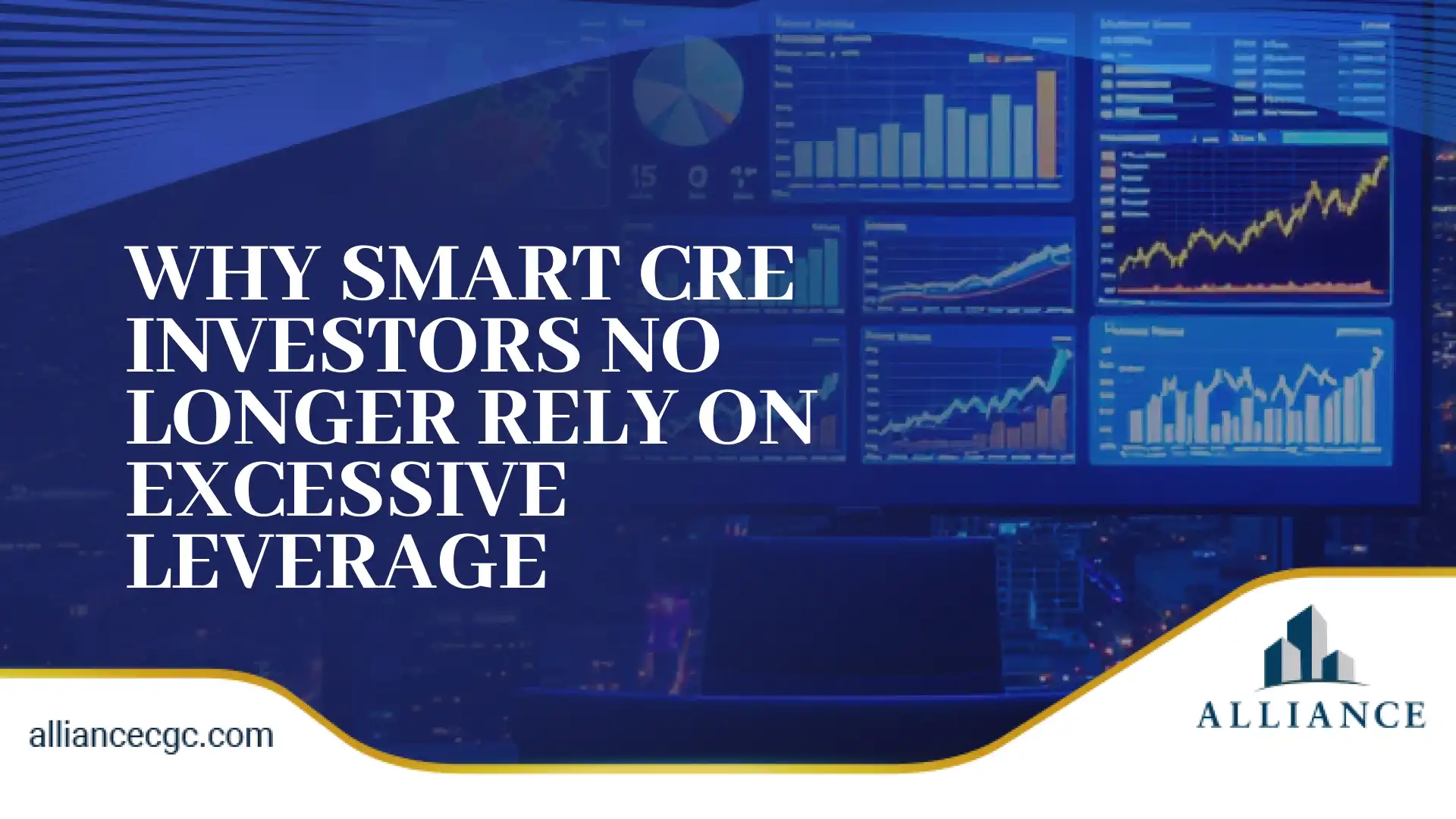
There was a time when abundant cheap debt made high leverage look like the fastest way to scale. Many investors leaned heavily on borrowed capital, assuming growth would offset the risk. In today’s environment of higher interest rates and stricter lending standards, that approach leaves portfolios vulnerable.
Experienced investors now view leverage as a strategic tool, rather than a shortcut to wealth. Instead of pushing debt to its limits, they build a balanced capital stack, blending equity and financing to preserve flexibility. They also use the DSCR as a safeguard and stress-test assumptions to confirm loans remain serviceable even when income shifts.
Managing leverage this way supports stable cash flow, healthier valuations and more substantial liquidity buffers. Far from slowing growth, disciplined borrowing strengthens portfolios, giving investors the resilience to expand confidently across market cycles.
5. Avoiding the Old Mistake of Skipping Due Diligence in CRE Deals

In the past, some investors rushed acquisitions under pressure, cutting corners on due diligence. That often left gaps in their understanding of a property’s legal, financial or physical condition. Today’s most disciplined investors have moved beyond that mistake, knowing that rigorous due diligence isn’t a delay; it’s a safeguard for capital and a foundation for performance.
Comprehensive due diligence goes deeper than a surface review. It includes zoning compliance checks, tenant lease audits, estoppel certificate reviews, title and lien searches and Phase I environmental assessments. It also means scrutinizing operating statements and service contracts to ensure financial models reflect reality.
Handled with care, this process doesn’t just protect against missteps; it creates confidence to move forward decisively. Investors who prioritize thorough due diligence enjoy more transparent negotiations, stronger underwriting and more resilient portfolios. What was once a common oversight has become a mark of professionalism and foresight in CRE investing.
6. Avoiding the Mistake of Overestimating CRE Exit Timing and Valuation
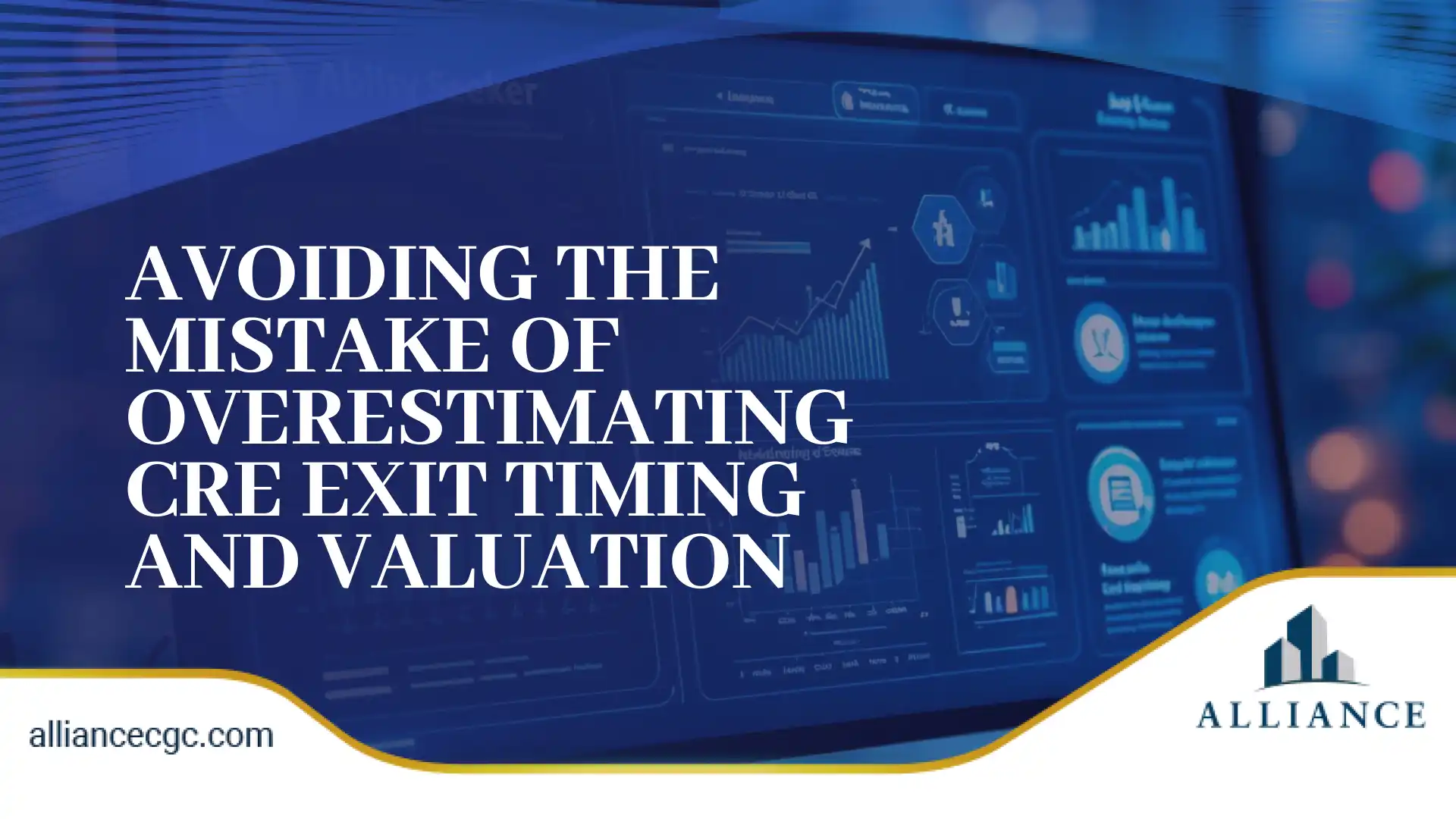
In commercial real estate, it was once common to underwrite on the assumption that an asset could be flipped in three years at a higher valuation. On paper, it looked simple. In practice, investors discovered that market cycles, interest rate shifts and absorption trends often stretched timelines and compressed returns.
Today, investors design flexible commercial real estate exit strategies. They don’t rely on a single path. Instead, they map out multiple disposition scenarios, set flexible hold periods and stress-test their valuation models against various assumptions, ranging from tenant rollover risk to changes in demand drivers. Appreciation remains a factor, but the primary focus is on cash flow durability and portfolio stability.
This shift has been decisive. By grounding exit strategies in fundamental market dynamics, investors gain confidence in their timelines, protect negotiating leverage, and ultimately strengthen portfolio performance. What was once a source of overconfidence has become an area where discipline creates opportunit,y and that’s where today’s leaders in CRE investing stand apart.
7. The Mistake of Overlooking Asset Management After Closing
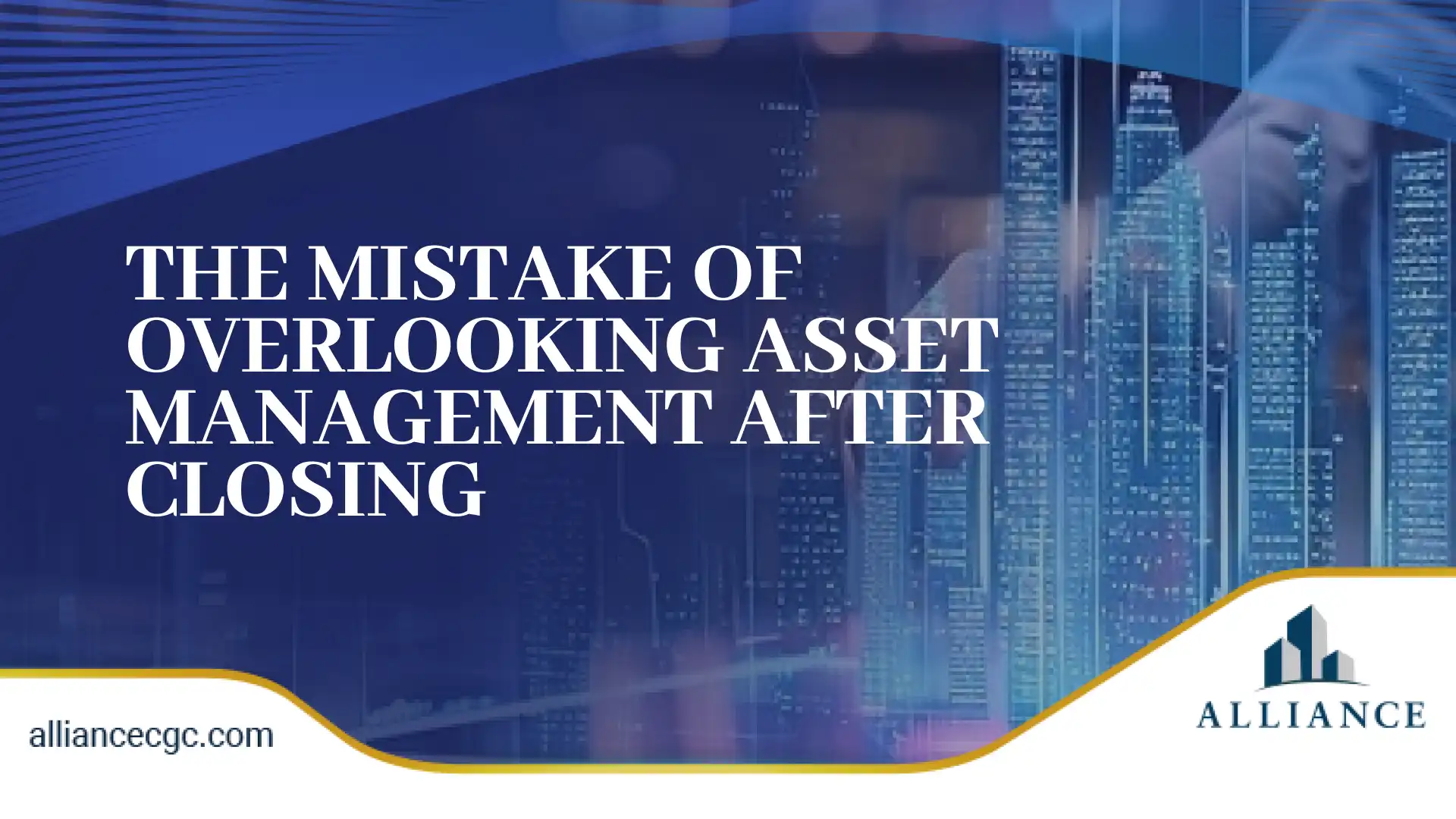
Acquisitions may get the headlines, but asset management best practices drive consistent performance. In the past, many investors shifted their attention elsewhere after an acquisition, only to see their net operating income (NOI) slip and property values stall.
The investors who outperform today take asset management seriously from day one. They focus on tenant retention by keeping renewal conversations active, planning capital improvements that support rental growth, and closely tracking operating expenses from vendor contracts to energy use, ensuring costs stay under control and NOI remains strong.
Handled this way, asset management best practices become a strategic tool for growth. By staying proactive, investors protect cash flow, strengthen valuations and build portfolios that remain resilient regardless of market movements.
Turn CRE Investing Mistakes Into Lasting Portfolio Growth
Most investors learn the hard way, but with Alliance CGC, you don’t have to.
Rather than navigating costly mistakes on your own, partner with a team that applies decades of expertise, data-backed underwriting, and precision asset management to protect and grow your capital. From disciplined acquisitions and expense modeling to tenant retention and flexible exit strategies, we do the work, so you don’t have to.
With billions in transactions, a $500M+ portfolio, and a 28% historical IRR, Alliance CGC delivers what others promise: strategic execution that creates real results.
Partner with Alliance to explore how Alliance delivers reliable growth and high returns across market cycles.
Frequently Asked Questions (FAQs)
What Are Asset Management Best Practices in Commercial Real Estate?
Asset management best practices in CRE focus on maximizing net operating income (NOI) and protecting long-term property value. This includes proactive tenant retention programs, timely lease renewals, accurate tracking of operating expenses in CRE and targeted capital improvements that support rent growth. Firms like Alliance emphasize data-driven oversight and consistent management as a way to strengthen valuations and build resilient portfolios across cycles. Understanding and optimizing operating expenses in CRE is central to every effective asset management strategy.
Is Depreciation Expense an Operating Expense in CRE?
In commercial real estate, depreciation is not considered an operating expense. Operating expenses typically include property taxes, insurance, maintenance, utilities, and management fees that directly affect NOI. Depreciation is treated as a non-cash accounting expense for tax and financial reporting purposes, separate from day-to-day operating expenses in CRE. Clarifying this distinction helps investors avoid confusion when evaluating property performance.
What Are Common Mistakes People Make When Investing in CRE?
Some of the most common CRE investing mistakes include relying too heavily on cap rates, underestimating operating expenses, ignoring demographic shifts, over-leveraging, skipping due diligence, and neglecting asset management best practices. Modern investors avoid these pitfalls by using disciplined underwriting, flexible commercial real estate exit strategies and active oversight to protect NOI and portfolio performance. Alliance’s approach stands out by helping investors implement these strategies to safeguard capital and capture sustainable growth. Accurately projecting operating expenses in CRE is often the key to preventing cash flow surprises.
What Is the Difference Between Operating Income and Net Income?
In CRE, operating income, often referred to as net operating income (NOI), is the income generated from property operations after subtracting operating expenses, such as taxes, insurance, and maintenance, but before debt service and taxes. Net income, on the other hand, is what remains after accounting for financing costs, depreciation and taxes. Investors focus on NOI when evaluating asset performance because it reflects the property’s true operating strength. Understanding how CRE operating expenses directly affect NOI helps investors make smarter underwriting decisions.










